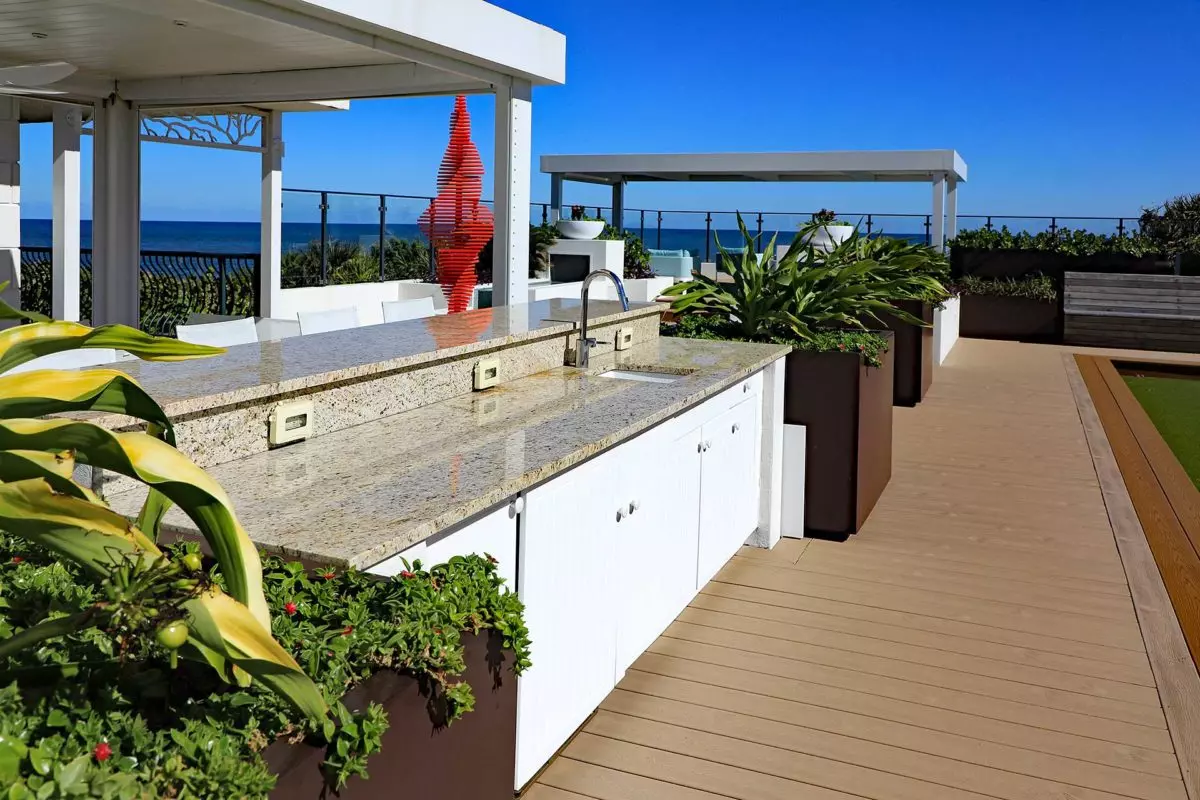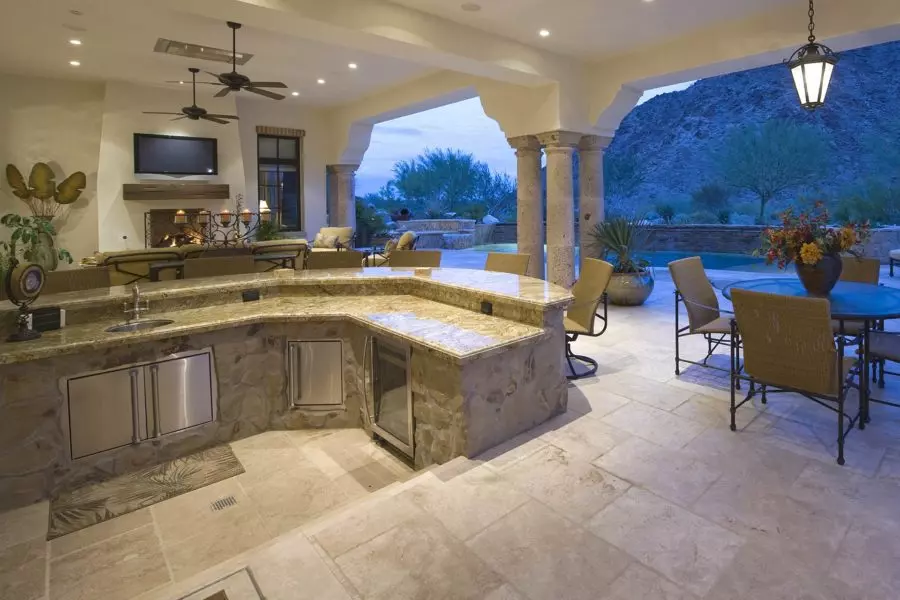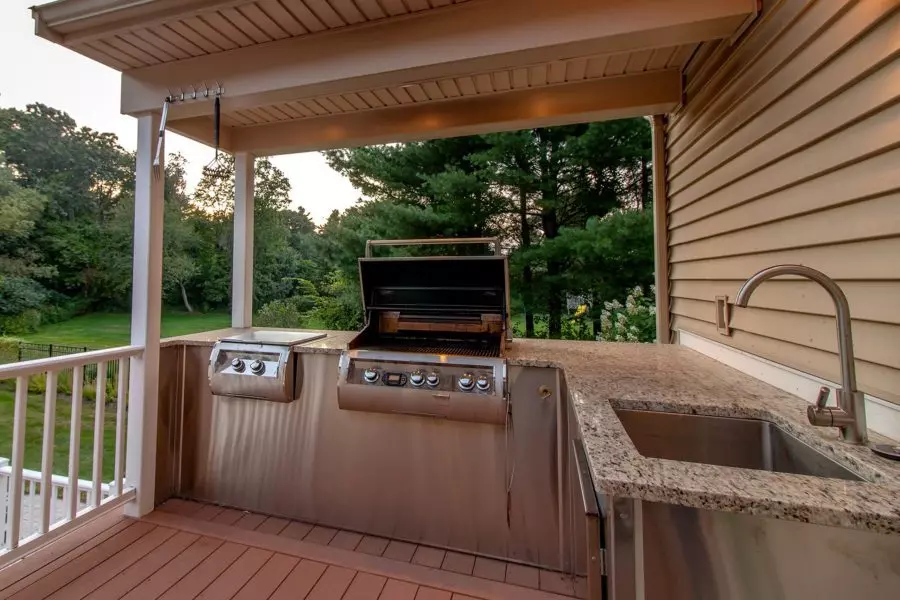Outdoor Kitchen Guide using Granite Countertops
For anyone who’s made the decision to install a kitchen that utilizes outdoor space, there are a number of important considerations to bear in mind during the design process. An outdoor kitchen is a unique home project, because not only are style and functionality important, but the materials selected for use in the space also have to be durable and weather-resistant.
An outdoor kitchen can be a space that’s welcoming for family gatherings, or just a place to enjoy nightly family meals. Like an indoor kitchen, it should be equipped with all the necessities, including appliances and adequate workspace. While selecting the perfect grill may be easy for most homeowners, choosing the materials for the countertop can pose more of a challenge.
Planning an Outdoor Kitchen
During the planning process, the priority is often designing for adequate counter space. Similar to an indoor space, it’s important to include enough space for both food preparation and serving. While the primary preparation space will usually be around 36 inches tall (standard for indoor kitchens as well), there’s also the option to create a split-level counter, which also has a raised bar area of 42 inches. Outdoor countertops are usually deeper than what’s found in indoor kitchens, in order to accommodate a grill, so anticipate a depth of about 30-36 inches, rather than the indoor standard of 24 inches.
Selecting a Kitchen Countertop Material for the Outdoors
Granite is one of the best materials to use in an outdoor kitchen, and it allows homeowners to enjoy luxury in an outdoor space. Not only does it provide an elegant and lavish style, but granite is also a great material because it’s easy to clean and maintain, durable and heat-resistant.
For outdoor use, it’s best to select slabs of granite that don’t have a great deal of veining, because epoxies and fillers are used on heavily veined granite, and those materials can have a negative reaction to the sun’s rays.
It’s also a good idea to avoid extremely dark granite countertops for outdoor use since they’ll retain heat and leave the home’s residents and visitors susceptible to burned hands.
The Advantages of Using Granite Outdoors
Aside from the style and durability of the material, granite countertops are also a great material to use on outdoor kitchen countertops because they are natural stones, which complement the natural beauty of the outdoors. It’s a great way to tie in the convenience and modern capabilities of the outdoors with the surrounding landscape.
In addition, granite has the ability to withstand extreme temperature changes—so whether it’s below freezing, or there’s sweltering heat, granite will maintain its integrity.
Other Outdoor-Friendly Materials
While granite is one of the most commonly used natural stones in outdoor kitchen countertops, there are other options available. Most notably, these include travertine and limestone. While these materials are somewhat durable, they’re not as durable as granite, meaning they may be more susceptible to scratching, staining, and heat damage, so they’re not ideal for outdoor kitchens that endure heavy use.
Quartz is one of the few natural stones that are not a good option for outdoor use, because of its tendency to fade when exposed to UV rays.
An outdoor kitchen is a luxurious addition to any home and should be designed to meet the needs of homeowners for years to come. The countertop is an important piece of the design puzzle that will alter not only the appearance but also the durability of the space, so when selecting a material, a resilient natural stone, like granite, is often the best choice.



